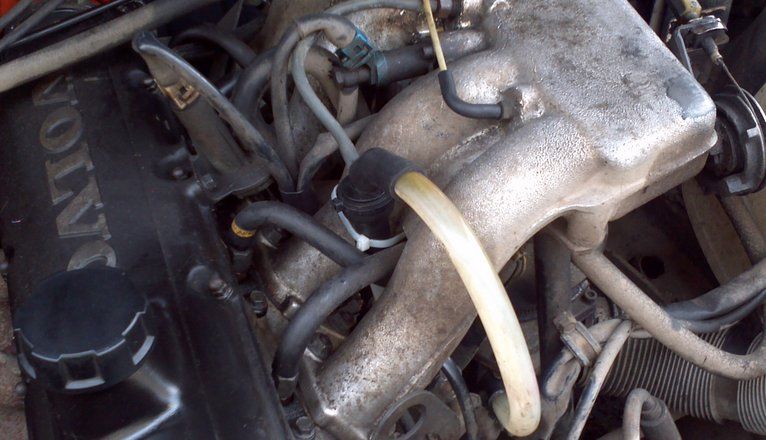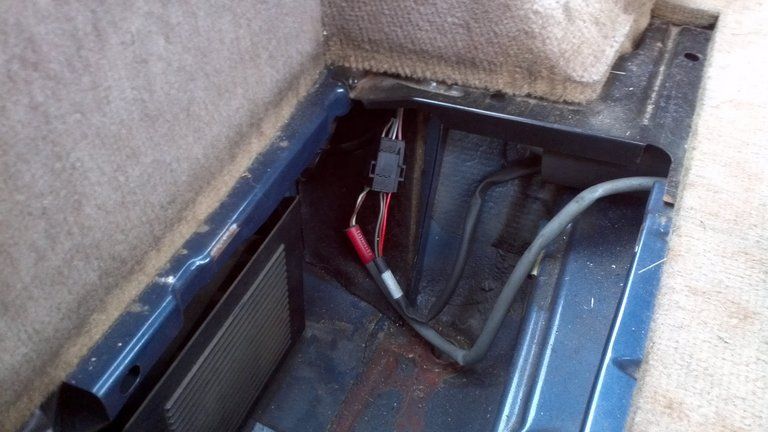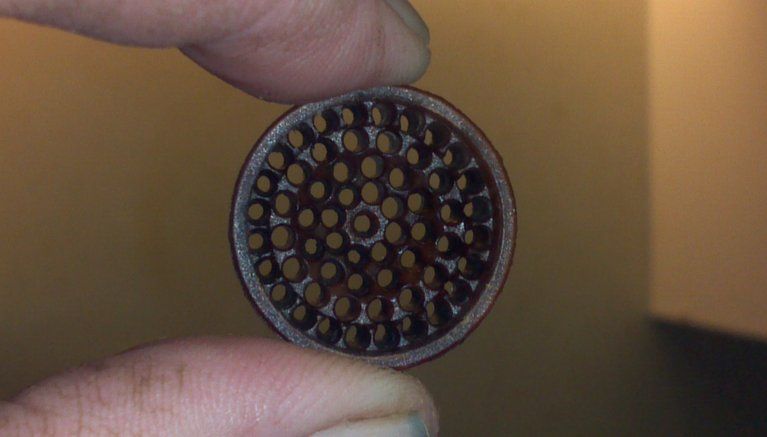

|
|||||||
| 700/900 Series General Forum for the Volvo 740, 760, 780, 940, 960 & S/V90 cars |
 Information
Information
|
|
Low RPM misfireViews : 9110 Replies : 81Users Viewing This Thread : |
 |
|
|
Thread Tools | Display Modes |
|
|
#41 |
|
Premier Member
Last Online: Jan 11th, 2020 11:54
Join Date: Jul 2012
Location: Not living on that bloody rock anymore
|
have you tried cleaning the idle control valve, cleaning the contacts on the maf sensor, cleaning the throttle body, washing out the combustion chambers. might be worth trying.
|
|
|

|
|
|
#42 |
|
Member
Last Online: Apr 23rd, 2016 11:56
Join Date: Dec 2012
Location: Dover
|
It's not an idle problem - it's any rpm from 900 to 1600. Doesn't have a maf. Everything on the inlet side has been cleaned out and made no difference. Carbon build in combustion chambers would cause a 'general' running issue, rather than a rev range specific, intermittent issue.
|
|
|

|
|
|
#43 |
|
Premier Member
Last Online: Jan 11th, 2020 11:54
Join Date: Jul 2012
Location: Not living on that bloody rock anymore
|
|
|
|

|
| The Following User Says Thank You to Will M For This Useful Post: |
|
|
#44 |
|
Premier Member
Last Online: Yesterday 17:28
Join Date: May 2012
Location: Lakenheath
|
Hi Rory and a belated welcome to the forum!
I've read your thread with interest as mine used to do this (and sometimes still does) and i'd like to get to the bottom of it too! First question is does your car have a catylitic convertor? If so, that could be beginning to clog up causing excess back pressure at idle. Secondly, when you checked your ignition timing, was the engine throughly warm (needle at least half way up the temp guage after a 5+ mile run) and did you disconnect and plug the vacuum advance hose? Thirdly, have a look at the top of your water pump where it meets the cylinder head. Is there evidence of a leak? If so that is probably your problem. It will leak coolant out and the fan will blow it back onto the plugs, causing a "damp" problem. As the revs rise, the extra airflow from the fan blows the water harder and tends to disperse it more so it doesn't hit the plugs. Fourthly, have you checked the rubber "sock" between the inlet manifold and fuel distributor for splits, perishing and security of the jubilee clips? Any leaks here will be most obvious at idle/low engine speed as the airflow over the metering flap will be erratic due to the leak. As engine speed rises, the amount of air leaking in will stay the same but the amount of air the engine will draw will increase so reducing the ratio of leak to inducted air. Lastly, when you cleaned the PCV system, did you check all the stubs in the valve and manifold to make sure they were clear and every hole in the strainer/filter? Also was the small bore vacuum hose in good condition, not perished or hard? I did mine recently and after a major clean up, a replacement vacuum hose and refitting, got a good improvement. I then re-sited it and re-routed the hoses which gave a great improvement not just to the idle but running in general :  If you'd like some words and pictures on exactly how i did it, here's a link to the original thread which might shed more light on your erratic running : http://www.volvoforums.org.uk/showth...83#post1356683 A couple more thoughts - what condtion is your air filter in? If it's blocked it could be causing a slightly rich mixture and "rough" flow. Also, what plugs have you got in it and what gap are you running? Certain brands are well known for misfiring, even when new! I have a couple more ideas but the ones above are the most likely so let's attack them first!
__________________
Cheers Dave Next Door to Top-Gun with a Honda CR-V & S Type Jag  Volvo gone but not forgotten........ Volvo gone but not forgotten........
Last edited by Laird Scooby; Mar 6th, 2013 at 01:25. Reason: Missed words out! Oops! |
|
|

|
|
|
#45 |
|
Master Member
Last Online: May 16th, 2014 08:31
Join Date: Mar 2010
Location: edinburgh
|
If the valve seats have worn, and they will have, the valve clearance will be to little, this will cause a poor idle and low rpm running.
I have re-read this thread and see no mention of this being checked. Despite it being an annual maintainance job. And FREE to do. Also as per another of my posts, the ignition module , can be troublesome. The intank pump is easy to check, disconnect the fuel -in line to the main pump underneath the car, turn it on and try to start it, if there is fuel coming out you have one in the tank, and it is working. But try the valves first, if they are tight it will run rough at low rpm, and it will get better as the revs rise, due to the gas flow through the engine not being easily reversed due to the port velocitys. Make sure the rocker cover studs are screwed down fully before re-fitting as they have little shoulders which if left loose will allow oil leaks Last edited by Diesel-do-nicely; Mar 6th, 2013 at 06:02. |
|
|

|
|
|
#46 |
|
Premier Member
Last Online: Yesterday 17:28
Join Date: May 2012
Location: Lakenheath
|
Hi Andy, i have to admit i'd not got to the valve clearances yet for the simple reason it's an intermittent fault on both cars. If it happened all the time then valve clearances would be one of my first thoughts.
I mentioned in my post about "other ideas" - one of them is indeed the ignition module. Also the earthing strap on the distributor. There's 2 earthing straps in that area with a common earth point on the bulkhead - one earth goes to the rocker cover and the other goes to the distributor. From what i remember the distributor earth is bolted under one of the distributor clamp screws and i know mine is broken. As it stands at the moment, i'm scarily low on fuel and i see no point trying to fix an unknown fault when there is another "rogue" variable involved i.e. low fuel which could easily cause similar symptoms. That said, i have noticed recently the rev counter has a tendency to "flick" every so often, particularly at low rpm. In past experience this suggests a poor earth on the ignition module although could equally be caused by the earth (or lack of) on the distributor. Another method of testing the in-tank pump is to lift up the boot carpet and find the multi-plug for the in-tank pump and fuel sender (3 wires) and disconnect it. Then try to start the car. If it starts and dies, chances are the in-tank pump is fine - re-connecting the plug and re-starting will prove the point. I find this method quicker, easier and less messy !  So far everything seems to point to the ignition side of things but time will tell i suppose! *Edit* Nearly forgot to mention, the ignition switch is playing up on mine too so need to sort that before i can do any more tests! Going to order a new one from Volvo in the next week or 2 as well as new injector seals - i'll fit them one at a time to see whether it's the switch or the seals causing the grief.
__________________
Cheers Dave Next Door to Top-Gun with a Honda CR-V & S Type Jag  Volvo gone but not forgotten........ Volvo gone but not forgotten........
Last edited by Laird Scooby; Mar 6th, 2013 at 12:48. Reason: Forgetfulness - D'oh! |
|
|

|
| The Following User Says Thank You to Laird Scooby For This Useful Post: |
|
|
#47 |
|
Member
Last Online: Apr 23rd, 2016 11:56
Join Date: Dec 2012
Location: Dover
|
Thank you for the in-depth posts. Hopefully I'll remember to cover everything.
Firstly, the information that WILL M posted a link to was useful. In particular, the part that said a failing tank pump will commonly cause stumbling and hesitation accelerating from idle. This rang very true to the issue I'm having. I want to test this idea further, but I'm not sure where the connector for the pump is (tried following the wires that lead to the tank backward, but they just disappear into darkness. Stuffing my hand down there didn't help me discover anything either). The clamps securing the fuel and breather lines are rusted on solid, so no doubt getting it out will be a thankless task, but a bench test would please me. I'm going to rule valves out (at least for now) as they don't really fit the profile of the problem. My car doesn't have a cat. The engine was warm at the time of ignition timing (though the temp gauge doesn't work, so I can't be too sure of the temp.) My rubber 'sock' is in good shape (I gave it a clean and a good look-over when I was doing the PCV). On the note of the PCV, mine didn't appear to have a filter/strainer, unless it's hidden inside the engine or inside the air metering body - it certainly wasn't anywhere in between! Earth straps to the head and to the distributor were taken off and cleaned up (though they weren't actually that bad anyway). Think that was everything. Give me a nudge if I've glossed over something. |
|
|

|
| The Following User Says Thank You to volvy740 For This Useful Post: |
|
|
#48 |
|
Premier Member
Last Online: Yesterday 17:28
Join Date: May 2012
Location: Lakenheath
|
As i normally run mine somewhere between dry and £40-50 worth, i can definitely tell you if the in-tank pump was not working, it would have stopped!
Is yours an estate? If so, lift up the cover over the left hand cubby hole in the load area and you'll see a 3 pin connector :  That's the one to unplug to stop the in-tank pump. Note that it will also prevent the fuel gauge reading as it carries one earth wire, the fuel sender feed and the +ve feed for the in-tank pump. Here's what the strainer looks like in the flametrap/PCV valve :  I have heard of people removing them completely to prevent them getting blocked. Bit of a false economy really, as is cleaning it as they are literally only pennies and can be found on ebay or Parts for Volvos Online - in fact they supply a complete new flame trap for under a fiver. Not sure what the postage is like though. A couple of hours ago i got a burst of energy, enthusiasm and had just taken my painkillers so i went out and renewed the connector for my distributor earth, then tried starting it. Turned over a couple of times (normal) then fired and immediately settled into a smooth idle - something of a rarity! Could be worth double checking the cleanliness of your earth straps (both ends) including the bodywork where the joint earth attaches to the bulkhead. Reckon my next step if mine acts up again (after changing my ignition switch) will be to investigate the ignition module. As far as i remember, it's hidden under the air cleaner box which makes it awkward to get to, especially on a cold day as the rubber mounts lose their flex and they need to be popped out to lift the airbox. Once the air cleaner is out of the way, you should be able to see the module. Usually held in with 2 bolts, one each end and the multiplug which should have a wire retaining spring clip on it. Use a screwdriver to pop the ends of the clip out to be able to pull the plug from it, unbolt it and remove. There should be some white gunk on the aluminium heatsink part of the module that mates with the body. Clean this off with some sort of solvent (meths or white spirit, Isopropyl-alcohol or similar) to reveal the bright, shiny heatsink. Whatever you do, DON'T use sandpaper, emery cloth or similar on the heatsink. Clean the mating face on the inner wing in a similar way and make sure there is no corrosion in that area and make sure there is a clean, bright area of metal where the bolts go in. Once you've got everything clean, bright and shiny, smear some fresh heatsink compound on the aluminium part of the ignition module and refit. You may have to wiggle the module a bit to spread the heatsink compound about to ensure coverage. Beware of the cheap compounds as they often contain copper particles which can cause short circuits and hence even more problems! Even if it doesn't cure the fault, it's useful preventative maintenance. The compound does eventually degrade over time and if it's been on there 24 years (like mine) it's well worth doing just for the peace of mind! After that, i think you're down to things like maybe the ignition switch, spark plugs (you didn't say what plugs and gap you've got?) and then probably checking fuel pressure - Andy (diesel-do-nicely) would be better to explain checking/adjusting the fuel pressure on the K-Jetronic than i would as i have more experience/knowledge of the L-Jetronic and early Motronic (updated L/LE Jetronic) systems although these days i'm a bit rusty on those even. Something silly i've just thought of, if you follow the vacuum advance hose from under the bonnet, it disappears inside the car. It comes out on the ignition timing control box under the instrument panel. If you remove the under dash trim panel, you should be able to see it quite easily. Make sure the advance hose is still connected to the timing control box as that will cause problems if it's disconnected!
__________________
Cheers Dave Next Door to Top-Gun with a Honda CR-V & S Type Jag  Volvo gone but not forgotten........ Volvo gone but not forgotten........
|
|
|

|
| The Following User Says Thank You to Laird Scooby For This Useful Post: |
|
|
#49 |
|
Member
Last Online: Apr 23rd, 2016 11:56
Join Date: Dec 2012
Location: Dover
|
The flametrap was empty, so I think a previous owner must have removed it.
The plugs are Volvo. I can't remember the gap I set of the top of my head, but I used a Haynes manual to get the figure (didn't just guess it). I'll have a look for the pump connector tomorrow and see what happens when I disconnect it. If that turns out to be a dead-end, I'll have a poke at this ignition module (this is different from the amp?). I built a PC last summer and have thermal paste left over from that. Would that be okay to use, or would I need something different? |
|
|

|
|
|
#50 |
|
Premier Member
Last Online: Yesterday 17:28
Join Date: May 2012
Location: Lakenheath
|
The thermal paste should be ok to use as long as it has no copper in it. Should be a silicone based thermal compound.
The ignition module is the ignition amp, just different terms for the same thing. On my other car it's called the ignitor just to confuse us all! Not sure who makes plugs for Volvo, be good if you can find out? If they are made by Champion or Beru, chances are they are giving you a misfire. Best plugs to use are Bosch or NGK. I use NGK as both the Volvo and my other beast use BC-PR6ES although offically the other car should have BC-PR6E-11 plugs. The "11" only refers to the gap which is preset to 1.1mm but if i set the gap myself i can buy a trade pack of 10 and set the gaps as i need them. As for the gap, i usually go 0.1mm larger than Haynes suggest. There's many arguments for and against this idea but it's always worked for me over 25+ years on a variety of different cars. The links in my last post take you to listings for the flametrap and the strainer - my line of thought is if Volvo put it in there, it needs it in there. Volvo did move it up the engine on carb models which gave me the idea to move mine up too. Another thought - when did it last have a decent engine flush and oil and filter change?
__________________
Cheers Dave Next Door to Top-Gun with a Honda CR-V & S Type Jag  Volvo gone but not forgotten........ Volvo gone but not forgotten........
|
|
|

|
 |
| Currently Active Users Viewing This Thread: 1 (0 members and 1 guests) | |
|
|